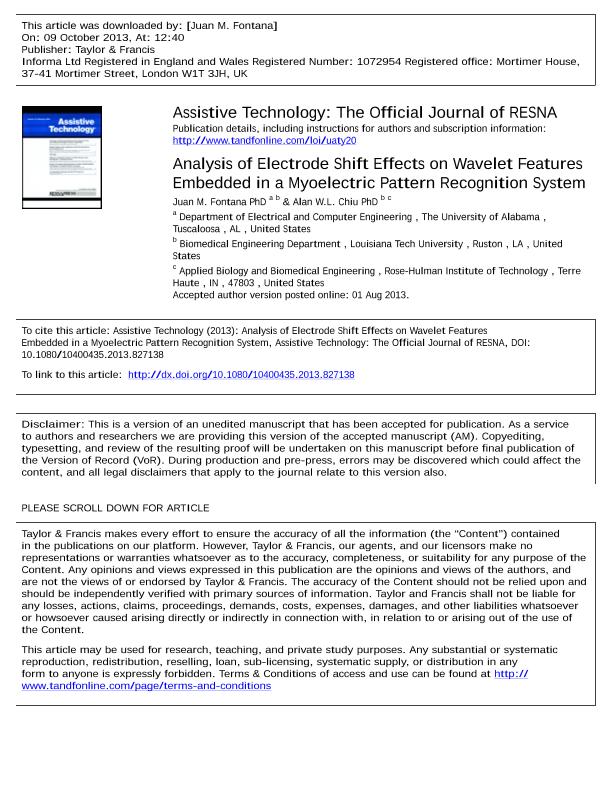Artículo
Analysis of electrode shift effects on wavelet features embedded in a myoelectric pattern recognition system
Fecha de publicación:
08/2013
Editorial:
Taylor & Francis
Revista:
Assistive Technology
ISSN:
1040-0435
Idioma:
Inglés
Tipo de recurso:
Artículo publicado
Clasificación temática:
Resumen
Myoelectric pattern recognition systems can translate muscle contractions into prosthesis commands; however, the lack of long-term robustness of such systems has resulted in low acceptability. Specifically, socket misalignment may cause disturbances related to electrodes shifting from their original recording location, which affects the myoelectric signals (MES) and produce degradation of the classification performance. In this work, the impact of such disturbances on wavelet features extracted from MES was evaluated in terms of classification accuracy. Additionally, two principal component analysis frameworks were studied to reduce the wavelet feature set. MES from seven able-body subjects and one subject with congenital transradial limb loss were studied. The electrode shifts were artificially introduced by recording signals during six sessions for each subject. A small drop in classification accuracy from 93.8% (no disturbances) to 88.3% (with disturbances) indicated that wavelet features were able to adapt to the variability introduced by electrode shift disturbances. The classification performance of the reduced feature set was significantly lower than the performance of the full wavelet feature set. The results observed in this study suggest that the effect of electrode shift disturbances on the MES can potentially be mitigated by using wavelet features embedded in a pattern recognition system.
Archivos asociados
Licencia
Identificadores
Colecciones
Articulos(CCT - CORDOBA)
Articulos de CTRO.CIENTIFICO TECNOL.CONICET - CORDOBA
Articulos de CTRO.CIENTIFICO TECNOL.CONICET - CORDOBA
Citación
Fontana, Juan Manuel; Chiu, Alan W. L.; Analysis of electrode shift effects on wavelet features embedded in a myoelectric pattern recognition system; Taylor & Francis; Assistive Technology; 26; 2; 8-2013; 71-80
Compartir
Altmétricas




